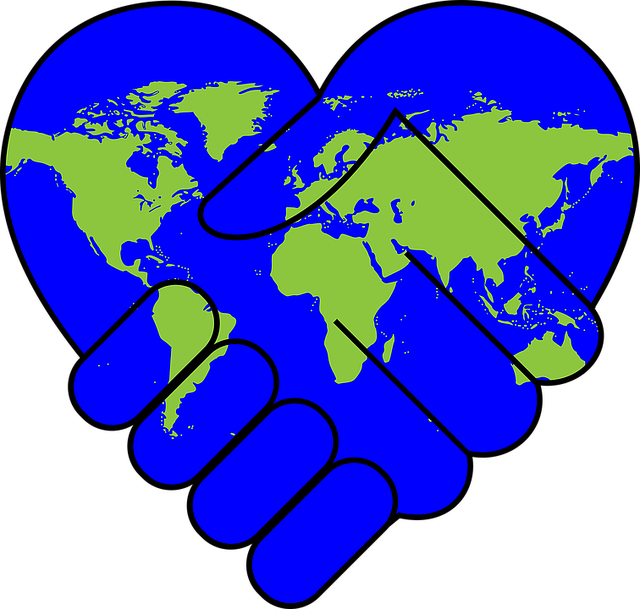In this article we would like to share our experiences with you, hoping to be of great help when it comes to communication with audiences from different countries. We’ve spent (still do) many years abroad, encountered people of different nationalities, coming from different cultural backgrounds. We’ve lived, studied, worked in many places. Endless experiences. All of this has its own beauty but of course its difficulties as well. Communication varies from culture to culture. But we have learned a great deal about how to adapt, not only in private life but also in business.
Creating a multilingual website is essential for businesses that serve customers in different countries or regions, or are looking to grow and thus need to expand to foreign markets.
When your business is ready to implement a multilingual website, there are a variety of services and tools available to help you with the process. However, you may encounter some significant challenges along the way. That’s why we want to share some tips with you on what to pay attention to when opening up to foreign markets.
1. Multilingual Online Marketing
Expanding a business beyond the borders of the country of operation is one of the business goals that entrepreneurs often consider but they rarely do more than planning. First and foremost, participating in multilingual marketing raises problems and challenges that are very realistic and businesses have every right to have fears.
International marketing is not an easy task. It requires significant investment in both budget and time. Quickly translating content from an existing site using an online translator will not achieve the results you want, even if your site is already very popular in your home country and has a lot of inbound traffic. Inaccurate translation is rarely effective and it can increase the bounce rates dramatically.
If you are serious about starting multicultural marketing for your business, you need a well planned online marketing strategy that addresses all the major multilingual challenges you will face during the journey.
If you are 100% positive that your business is ready to explore a new digital world, and all the relevant data and statistics also support this idea, then you can get started. Increased traffic offers tremendous opportunities but only if you rely on a marketing team that has a strong understanding of how foreign markets work and does not have problems working in foreign languages for market research, keyword research, SEO, web design or content audit. The key is to make sure you have a comprehensive multilingual marketing strategy and you are prepared for the challenges ahead.

2. Incorrectly translated content
Like any businesses, I’m sure that you have spent a great deal of time and money creating quality content for your site that answers customers’ questions, provides them with information they need, educates them and as a result everything feels like a real personal experience.
However, if you rely on machine translation to present carefully crafted content in other languages, you will immediately and greatly damage the reputation of your business. Machine translation is famously unreliable, inaccurate and robotic. It often lacks grammar and, of course, has nothing to do with brand voice, personality and subtle nuances that could be of real interest to international audiences.
If the content doesn’t resonate, readers won’t click. This will degrade your SEO performance and prevent new audiences from finding your website.
While machine translators are fast and cost-effective, they are not very reliable and can produce terrible translations that negatively impact user experience, message interpretation and, last but not least, your site’s rankings in search engine results. So it negatively affects SEO. To ensure that your site’s content is translated in the right way and in the right context, you need to rely on trusted service providers where your content is audited by people who are aware of the needs of your target audience and the specifics of the sector.
Poor translation can damage the image of the company and may be considered offensive by the users. If you are seen unprofessional by your potential international partners, nobody will want to do any business with you, and customers will turn away from the products and services you provide. This mistake allows your competitors to take your place and ‘collect’ the potential international clients instead of you.
![]()

To tell you the truth, when people visit your website, they immediately judge your business. For a new user everything is part of the experience. This includes design and of course the content.
We don’t have to go far to prove it, just consider yourself – when you visit a new website yourself, you decide very quickly whether to stay on the site or jump out. Spelling mistakes and poor quality translation can be very discouraging to potential clients. Do you think that anybody is going to buy a product or service from you if they see that you have not invested enough in translating the content into the right language? Unfortunately not. They will simply find the website of your competitor who has been willing to make the necessary efforts.
As search engines evolved, the perception of what is considered as authentic, quality content has also changed. Nowadays, it can be detrimental to search engine rankings if the same keywords are repeated many times on the same page. Also Google and other search engines reward only relevant and trusted content.
Each piece of content has its own message and word by word translation can distort what our message carries to people. This means that we sometimes have to change the words, the images, taking into account cultural expectations – but at the same time leaving the essence intact. Mastering this very fine balance will determine our success in intercultural communication and thus in international online marketing.
3. New and unknown audience

Each country is a separate world with its own features, expectations, and cultural philosophy. This means that your marketing strategy, your approach toward your target audience, may not be the same as the existing one. You cannot apply everywhere the online marketing strategy designed for your home country.
For instance, what would be perceived as humorous in one country could easily be interpreted as an offensive expression in another.
Or while in the United States red colour represents passion, in Asian countries it is associated with joy, in the Middle East the colour is used as a warning.
But you do not have to think that big, across continents. Let’s just stay with Europe. Cultural differences are often manifested in people’s style and behavior. We need to approach a potential Italian business partner rather differently than English, German, Swiss or even Spanish partners. The style of the content on the website should be carefully designed, tailored to each language and country. You need to know when you can use some humor, but you also need to know where the limits are. It’s all about fine lines.
Although we tend to think that these tiny differences have no significant consequences, they play a very important role when entering new markets. Success depends on these tiny factors. And to succeed, an extensive research of the culture of your new audience is required before you can target them with your marketing strategy. Believe me, cultural differences are very important even if you stay on the European market because we are talking about a culturally diverse continent.
4. Mastering International SEO
We know how important SEO is when designing websites, not to mention the case of creating multilingual websites for international markets. The right audience has to discover the products, services and the message in general your business offers, so it is critical that the translated content is ranked in a high position by search engines.
Google Translate seems to be a handy tool for translating content. After all, it’s free, easy to access, and created by one of the leading companies of the online world. Ironically, however, Google’s own machine translation solution is lagging behind in one critical area: search engine optimization.
The art or science of achieving high rankings is constantly evolving, thanks to Google’s people in particular, who use top secret algorithms to determine which sites should be ranked in the top positions. We know little about how these algorithms really work, but it is certain that sites with the most relevant content, keywords and key phrases will appear on the first page of search engine results. Higher rankings in organic searches are one of the main goals of any marketers. In multilingual marketing, international search engine optimization (SEO) is just as important as local SEO for your own country. While it may seem like standard SEO at first glance, there are a few basic differences that you need to understand before you start creating content in other languages.
Remember that your site must be search engine friendly and every page must have a title tag, meta description, keywords, alt tags, and so on. If you haven’t already done so, this is the perfect time because you need to optimize your website for Google to rank better for foreign markets as well. To ensure that each page is optimized in a foreign language, make sure you do not translate your keywords word by word. People may not be looking for the exact same terms in different countries.
You’ll need to look at the relevant keywords and phrases that the international audiences use for their Google queries. We need to know what they type in a search engine when they are looking for a product or service. You need to know how much competition you are facing regarding the keywords in each country.
If you have identified all the relevant keywords and phrases, you can start optimizing URLs, titles, meta descriptions, menu and navigation elements, images, ALT tags.
If you have a lot of pages on your site and you want to translate this content into several other languages, managing content can become a real nightmare. Make sure you use the right plugins in WordPress and always make a copy of the content.
Now it’s obvious that you need to rely on a marketing team that is well-equipped to carry out international search engine optimization for you, and whose members have mastered the respective languages.

5. Promoting content – choosing the right marketing channels
Once you have found a common cultural language with your new audience and you know what you want to tell them, what your message is about, you need to find the most efficient way to convey the information. The variety of channels and platforms available to marketers makes it easier to target groups based on demographic criteria, so the real issue here is simply selecting the right medium.
For example, social media is not as widespread in every country in the world and this is something you need to consider when building your online marketing strategy. Similarly, each social media platform has its own demographic groups in different countries, segmenting the audience by factors such as age.
Right research can reveal useful insights and these will form the basis of developing the right online marketing strategy. Knowing how the target audience behaves on a specific online or social media platform is crucial to the success of international marketing.

6. Choose the right people for your multilingual online marketing
Finding the right people to do the job can be a difficult challenge. First of all, effective translation and search engine optimization requires professionals with advanced or native level language skills. Anything below that can have a negative impact on content production, and can undermine all the online marketing efforts right from the start.
The best solution is to outsource the entire project to a marketing team that has the experience and skills to successfully reach multicultural markets. This option is more cost-effective and allows you to achieve optimal results in a shorter period of time and at a fraction of the costs. Alternatively, of course, the business may decide to manage everything in-house but this requires a greater investment of time and money, as the first thing to do is to find the best people for the job with the necessary language and cultural experience. Ultimately, it is up to you but all factors must be considered before choosing the right method.
Final thoughts
A properly designed and executed international marketing plan is the goal and desire of every business, as it can be a huge success. Increased traffic and the expansion of your business to a whole new target audience can result in increased profits. Obviously, when making a decision businesses face some fears about their costs and the future of the company. Bud I don’t want you to get discouraged. When properly prepared, multilingual marketing strategies and efforts can open up new, unexplored possibilities while creating a brighter future for businesses.
If you’re thinking about multilingual marketing, feel free to contact us for advice to help you ease your concerns and discuss how we can help you achieve your goals.
Sources:
https://www.o8.agency/blog/multilingual-marketing-2019-challenges-and-considerations
https://neilpatel.com/blog/how-to-international-seo/
https://www.textunited.com/blog/how-bad-translation-can-hurt-your-business/
https://www.pangeanic.com/knowledge_center/importance-of-translation-for-multilingual-seo-mseo/#
https://www.motionpoint.com/blog/is-google-translate-bad-for-multilingual-seo/
